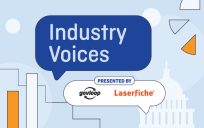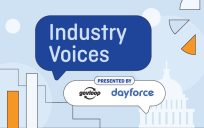 Keep Pace with the Digital World
Keep Pace with the Digital World
Governments sit at the precipice of a digital, connected landscape. While they are uniquely positioned to create and carry out solutions to some of society’s most pressing problems, effectively implementing the organizational changes necessary to keep pace with the digital world remains a challenge.
In Four Areas to Break Down Silos, I noted that investing in key areas of operation is essential for success in a context of burgeoning data and reduced resources. Sustainability in a world of rapid technology advancements requires a thoughtful long-term strategy. This strategy must be centered around building a strong digital foundation that can:
- Create connections;
- Solve today’s problems; and
- Provide flexibility for future innovation.
But who drives this strategy? This is the role – perhaps the most important one – of today’s government leader.
Create Strategic Connections
When leaders champion an organization that works across silos to take advantage of data to “learn at the speed of digital[1],” employees at all levels are empowered and the community benefits. Building a modern digital infrastructure must happen for government systems to connect on a level that’s not just surface deep. Connected systems create more proactive, targeted, and effective service delivery.
- Connect across the enterprise. Most stakeholder frustration comes when the left hand of government doesn’t talk to the right hand. With data, departments can coordinate in real time and operate from a single source of truth, putting everyone – including the public – on the same page.
- Connect across jurisdictions. Society’s most pressing problems – such as an environmental quality, transportation, public safety, and public health —are not confined to arbitrary political boundaries. Governments can see great gains in efficiency by connecting processes and workflows outside of traditional boundaries. Governments can connect horizontally, city-to-city or county-to-county, or vertically, city-to-state or county-to-state.
- Connect with residents. Using data to inform, engage, and enable action creates successful, user-centered policy and program design and delivery. Open data facilitates innovative public-private partnerships, and digital self-service increases residents’ access to government while reducing staff burden and saving resources.
Transform Beyond Technology
These connections: across the enterprise, across jurisdictions, and with residents, don’t happen overnight. Turning vision into strategy into results involves incremental progress toward achieving meaningful data sharing, beginning inside the organization.
Leaders can drive change by:
- First, defining integration and data sharing between internal line-of-business systems and departments; and
- Second, streamlining and enhancing interactions with the public.
As internal efficiencies become natural byproducts of these efforts, leaders can drive new connections across geographic boundaries to link together or automate business processes across jurisdictions. This amplifies the impact.
Experience teaches us that this evolution is just as much an organizational challenge as it is a technology project. Leaders often focus solely on technical challenges by directing linear, prescriptive solutions. Digital innovation in government, however, is largely an adaptive challenge. Adaptive challenges require different leadership methods: ones that pull rather than push, enable rather than require, and mobilize rather than direct.
Check this space next week to learn the top three ways leaders can drive change in organizational behavior to immediately start creating valuable connections.
[1]https://medium.com/digitalhks/teaching-digital-at-the-kennedy-school-of-government-a-road-map-5ef3e847c8a8
Meredith Trimble is a GovLoop Featured Contributor. She is a former municipal official and Town Council Acting Chair, who focused on strategic planning, annual budgeting, and bonded infrastructure projects. Her government experience also includes posts in both federal and state-level executive branch agencies: Associate Editor of the U.S. Federal Election Commission’s FEC Record; and Director of Education for the CT Office of State Ethics. In her current role as a Senior Content Specialist with Tyler Technologies, Inc., she writes content to help empower those who serve the public. You can read her posts here.





Leave a Reply
You must be logged in to post a comment.